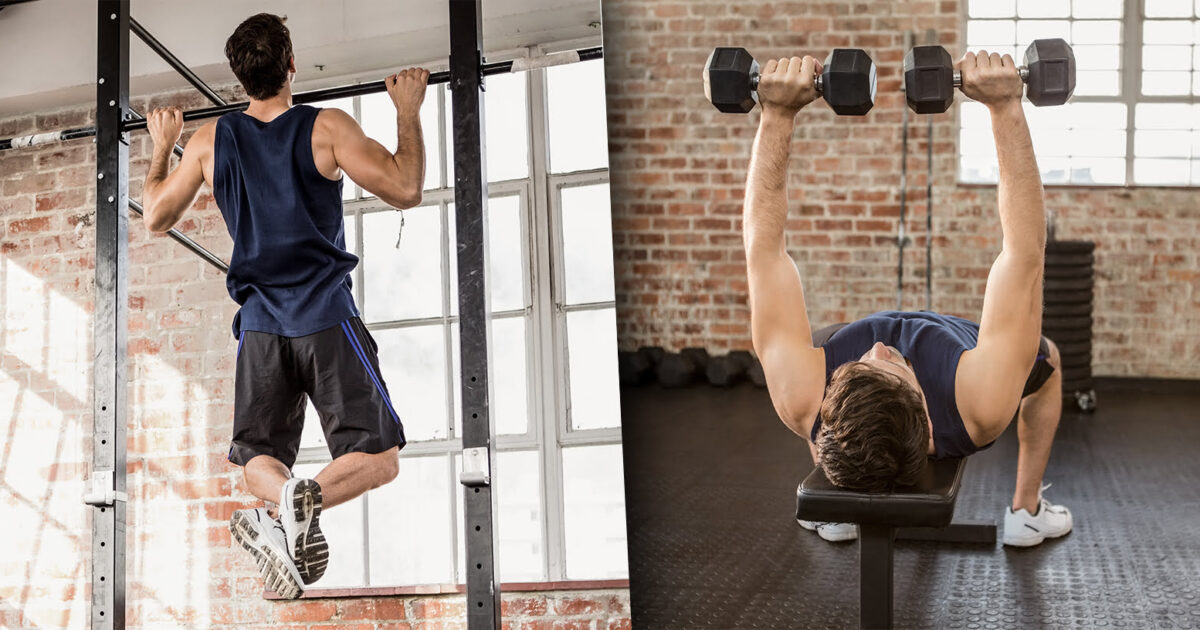Whether you’re just starting or are a regular gym-goer, let us tell you one undeniable truth about exercising: you’ll eventually hit a workout plateau. Don’t worry — it happens to the best of us. One of the reasons behind it might be your fitness routine. That’s why we suggest mixing things up a bit and trying a different approach.
Recently, we grew fond of the push and pull routine, and in this article, we’ll tell you why. We’ll also explore the main differences between push and pull motions and how they can help you optimize your training and achieve your fitness goals.
Push and pull: Main differences
It’s all in the name, isn’t it? Push and pull are two basic strength movements commonly used in many physical activities and exercises.
Imagine a door with a push sign on. By pushing it, you’ll exert force away from your body forward. It’s the same with push exercises, the most common being the push-up, chest press, shoulder press, or triceps dips.
Now the door has a pull sign, which means you’ll put forth your force towards your body, bringing it to you. That is what happens when you perform pull-ups, rows, bicep curls, and lat pulldowns.
Since these are all upper-body exercises, a push and pull routine usually includes one or two leg sessions to make sure you cover all your muscle groups.

Benefits of the push and pull routine
1 – More time to recover
Splitting your workouts between push and pull movements allows you to focus on specific muscle groups while giving much-needed rest to the others. For example: on Monday you focus on push exercises, and you’ll hit your chest and triceps. On the next training session, you’ll focus on pull exercises, meaning your chest and triceps will be recovering even while you’re working out.
2 – Get lean — quicker
You’ll train more of your body per workout than you would on a traditional split. That way, you’ll burn more fat and build more muscle. Let us explain: in a traditional routine, you divide training sections per muscle group. Since the push and pull routine is not focused on specific muscle groups but on movements, you’ll end up with a training routine that has a more comprehensive approach to your whole body, helping you get leaner faster.
3 – Anyone can do it
Whether you’re a regular gym-goer or just starting your fitness journey, the fact is that a push and pull routine is pretty straightforward. Plus, you can adjust the number of times you train and the weight you use according to your strength training experience.
How to structure a push and pull routine?
A 3-day push-and-pull routine would be like this:
- Day 1: Push day.
- Day 2: Pull day.
- Day 3: Leg day.
You could easily turn this into a 6-day routine by repeating the format while choosing different exercises.
- Push exercises: Push-up, bench press, overhead press, lateral raise, front raise or triceps extensions.
- Pull exercises: Pull-up, barbell row, single-arm row, lat pulldown, biceps curl, face pull.
Tip: You can work on your core and abs on leg days, making this a whole-body approach.
Still unsure? Try it all combined in one single workout.
If you’re still doubtful about this approach, you can start by trying it in a single workout that combines push and pull movements, also working on your legs.
10-minute push-pull AMRAP
- Pull-ups – 5x
- Push-ups – 10x
- Squats – 15x
Workout setup
This workout is an AMRAP — as many rounds as possible for 10 minutes. It has 3 exercises, each with a different amount of reps per exercise and little to no rest. You’ll only need a pull-up bar, an exercise mat and a stopwatch to perform it.
Simple right? Now, it’s time to put it into practice.




